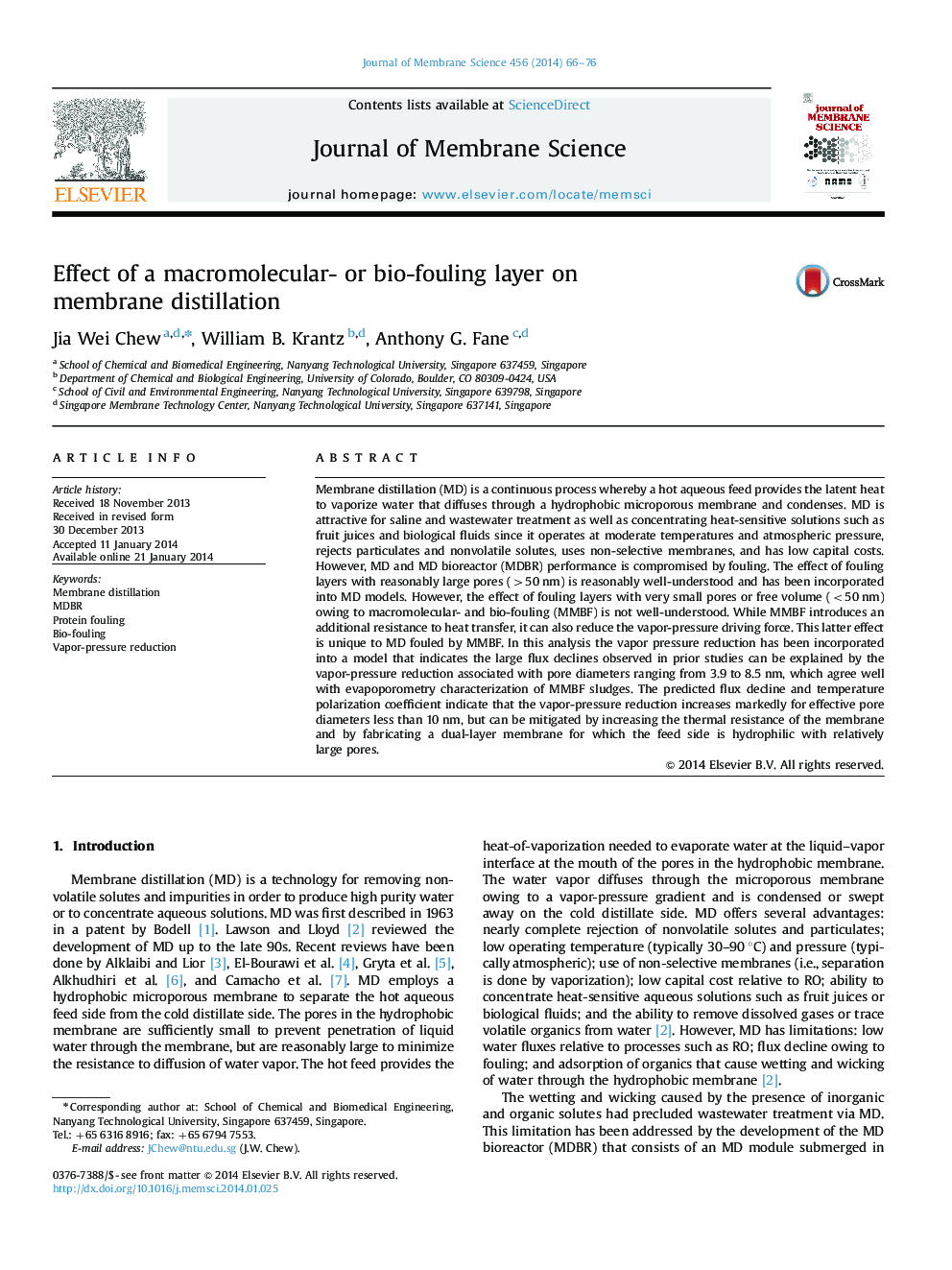| کد مقاله | کد نشریه | سال انتشار | مقاله انگلیسی | نسخه تمام متن |
|---|---|---|---|---|
| 633743 | 1456043 | 2014 | 11 صفحه PDF | دانلود رایگان |
• Vapor pressure reduction due to a MMBF layer has been incorporated into a MD model.
• An MMBF layer causes significant reduction in water-vapor flux in MD or MDBR.
• Model provides explanation for large flux declines observed in prior studies.
• Vapor-pressure reduction increases markedly for pore diameters less than 10 nm.
• Model suggests ways to mitigate flux decline due to vapor pressure reduction.
Membrane distillation (MD) is a continuous process whereby a hot aqueous feed provides the latent heat to vaporize water that diffuses through a hydrophobic microporous membrane and condenses. MD is attractive for saline and wastewater treatment as well as concentrating heat-sensitive solutions such as fruit juices and biological fluids since it operates at moderate temperatures and atmospheric pressure, rejects particulates and nonvolatile solutes, uses non-selective membranes, and has low capital costs. However, MD and MD bioreactor (MDBR) performance is compromised by fouling. The effect of fouling layers with reasonably large pores (>50 nm) is reasonably well-understood and has been incorporated into MD models. However, the effect of fouling layers with very small pores or free volume (<50 nm) owing to macromolecular- and bio-fouling (MMBF) is not well-understood. While MMBF introduces an additional resistance to heat transfer, it can also reduce the vapor-pressure driving force. This latter effect is unique to MD fouled by MMBF. In this analysis the vapor pressure reduction has been incorporated into a model that indicates the large flux declines observed in prior studies can be explained by the vapor-pressure reduction associated with pore diameters ranging from 3.9 to 8.5 nm, which agree well with evapoporometry characterization of MMBF sludges. The predicted flux decline and temperature polarization coefficient indicate that the vapor-pressure reduction increases markedly for effective pore diameters less than 10 nm, but can be mitigated by increasing the thermal resistance of the membrane and by fabricating a dual-layer membrane for which the feed side is hydrophilic with relatively large pores.
Journal: Journal of Membrane Science - Volume 456, 15 April 2014, Pages 66–76
